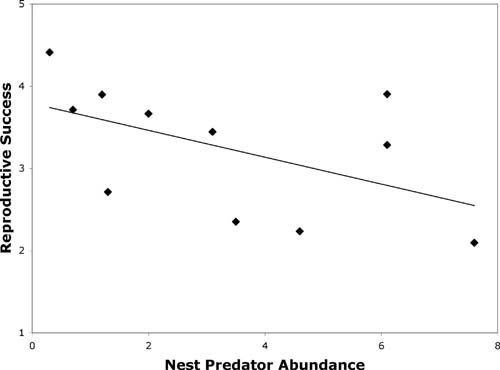Predation
| |

Reproductive success (number
of young produced per pair per year) in relation to the abundance
of chipmunks and red squirrels (number detected per survey hour)
on the main study plot at Hubbard Brook from 1988 to 1999 (predator data
were not available for 1986, 1987, and 1991; data from Holmes, Rodenhouse, and Sillett). |
Squirrels and chipmunks are the major
predators of Black-throated Blue Warbler eggs and nestlings. When
researchers looked at the relationship between the numbers of these
mammals and the warblers’ reproductive success in different
years, they found that the birds had lower success in years when these
predators were more common.
In this figure, each year is plotted as a point, and the line shows
the average effect of predator abundance on nest success.